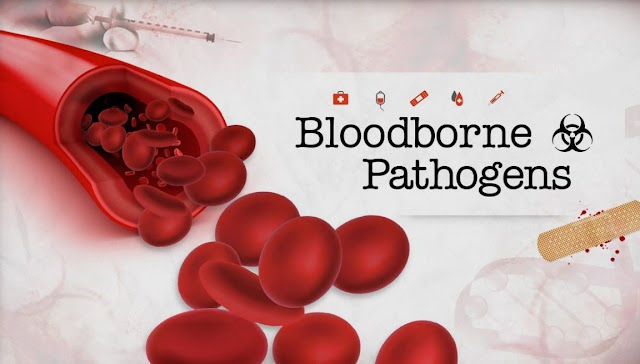5 Bloodborne Pathogens You Should Be Aware Of

Bloodborne pathogens are microorganisms transmitted from one person to another via blood and other fluids. This list of bloodborne pathogens can cause severe illness and even death if left untreated. Bloodborne diseases are categorized into BSE, or the blood-borne virus, and Bloodborne Pathogens.
Within these categories, several subtypes of diseases have different implications for your health and safety at work. For example, Hepatitis C is a blood-borne virus while Hepatitis B is a bloodborne pathogen. Know more about them below:
What are Bloodborne Pathogens?
Bloodborne pathogens are living microorganisms that can be transmitted from one person to another via blood and other bodily fluids. The most dangerous bloodborne diseases are HIV, Hepatitis B, and Hepatitis C. These pathogens can cause severe illness and even death if left untreated.
Hepatitis B
Hepatitis B is a viral infection that primarily affects the liver. It can spread through blood, products, and bodily fluids such as semen and vaginal secretions. While it can be caught through casual contacts, such as sharing food or drinks, most infections are due to blood transfusions, blood-borne needle sticks, or sexual contact.
Early symptoms of hepatitis B are similar to flu and include fatigue, fever, joint pain, and loss of appetite. If left untreated, the infection can cause severe damage to the liver, including fibrosis, cirrhosis, and even liver cancer.
Hepatitis C
Hepatitis C is a viral infection that primarily affects the liver. Similar to hepatitis B, it can be contracted through blood, blood products, and bodily fluids.
The most common ways to contract the virus include receiving an unsterilized tattoo or piercing, sharing needles for drug use or tattoos, receiving a contaminated blood transfusion, or having sexual contact with someone infected.
Early symptoms include fatigue, nausea, loss of appetite, and abdominal pain. If left untreated, the infection can cause severe damage to the liver, including fibrosis, cirrhosis, and liver cancer.
HIV
HIV stands for Human Immunodeficiency Virus. It is a virus that attacks the human immune system, unlike other bloodborne diseases. HIV can only be transmitted through certain bodily fluids, such as blood, semen, and vaginal fluids (not saliva or sweat). It is important to note that the risk of transmission is shallow, but it is not zero.
Early symptoms of HIV include flu-like symptoms, fatigue, and muscle ache. If left untreated, the infection can cause AIDS, or Acquired Immunodeficiency Syndrome.
AIDS is a condition in which the immune system is significantly damaged, and the body can no longer fight off infections. HIV is unique in that there is no cure. However, treatments available can help control the virus and delay the onset of AIDS.
HBV and HIV Co-infection
Hepatitis B and HIV can be transmitted from one person to another, and they can also be present in the same person simultaneously. This is known as HBV and HIV co-infection.
HBV and HIV co-infection is expected in the medical field because workers are constantly exposed to blood. They can often be infected with one or both diseases without symptoms or knowing they have it.
Like hepatitis B and hepatitis C, HIV is a virus that attacks the immune system; HBV is a type of hepatitis that primarily affects the liver. If a worker is co-infected, the disease will progress at different rates.
Syphilis
Syphilis is a bacterial infection that primarily affects the skin and mucous membranes, such as the mouth or genitals. You can catch syphilis by having unprotected sex with an infected person or through contact with an open wound that has had contact with the infection.
Early symptoms of syphilis include a rash that usually appears on the genitals or around the mouth, as well as fatigue, fever, and muscle ache. If left untreated, the infection can cause severe damage to the brain, heart, blood vessels, and other organs.
Summary
Bloodborne diseases are caused by various pathogens, including viruses, bacteria, and prions. The most common bloodborne diseases are caused by human immunodeficiency virus (HIV), hepatitis B virus (HBV), and hepatitis C virus (HCV).
While the transmission is possible through casual contacts, such as sharing food or drinks, most infections are due to blood transfusions, blood-borne needle sticks, or sexual contact. Early symptoms of bloodborne diseases include fatigue, fever, joint pain, and loss of appetite. If left untreated, these diseases can cause severe damage to the liver, brain, heart, and other organs.
